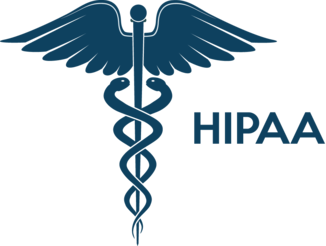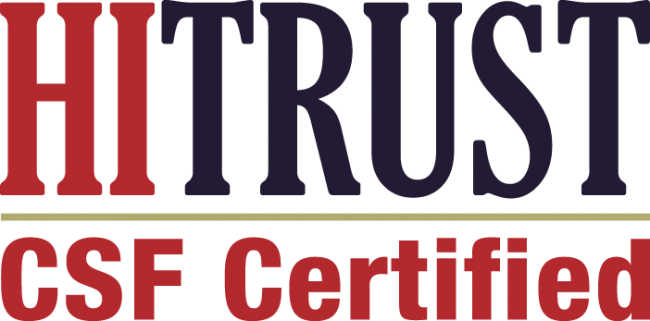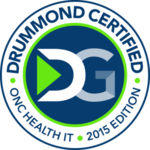The Growing Need for Chronic Care Management
Chronic diseases represent one of the most significant challenges facing the American healthcare system today. With nearly half of the U.S. population living with at least one chronic condition and approximately 30% managing multiple chronic conditions, the burden on patients, providers, and payers continues to escalate. For Medicare beneficiaries, this reality is even more pronounced; the majority of enrollees manage two or more chronic conditions simultaneously, driving both complexity and costs in healthcare delivery.
Recognizing this critical need, the Centers for Medicare & Medicaid Services (CMS) established the Chronic Care Management (CCM) program to provide coordinated, comprehensive care for patients with multiple chronic conditions. While the program offers substantial benefits, including improved patient outcomes and additional revenue streams for practices, many healthcare organizations struggle to move beyond basic compliance to achieve true excellence in care delivery.
This is where HealthViewX makes a transformative difference.
Understanding Medicare’s CCM Program: More Than Just Compliance
Medicare’s CCM program targets beneficiaries with two or more chronic conditions expected to last at least 12 months or until death, or conditions that place patients at significant risk of death, acute exacerbation, decompensation, or functional decline. The program reimburses healthcare providers for non-face-to-face care coordination services, including care planning, medication management, and ongoing monitoring.
As of 2025, Medicare continues to support CCM with updated reimbursement codes and rates. Practices can bill individual CCM codes, including 99490, 99491, 99487, 99489, 99437, and 99439, with reimbursement rates typically ranging from $42 to $85 per patient per month depending on the complexity and time spent on care management activities.
The Financial Opportunity
The revenue potential is substantial. A practice enrolling just 100 patients in CCM can generate between $50,000 and $85,000 annually in additional reimbursements. For larger practices managing hundreds or thousands of eligible patients, this represents a significant opportunity to improve both financial sustainability and patient care.
However, capturing this revenue while delivering meaningful patient outcomes requires more than simple compliance; it demands operational excellence, technological sophistication, and a patient-centered approach.
The Compliance Trap: Why Most CCM Programs Underperform
Many healthcare organizations approach CCM as a compliance exercise, checking boxes, documenting the minimum required time, and focusing primarily on billing rather than patient outcomes. This “compliance-first” mentality leads to several critical shortcomings:
1. Administrative Burden Without Efficiency
Manual tracking of patient interactions, time spent on care coordination, and documentation requirements creates overwhelming administrative burdens. Care coordinators spend more time on paperwork than actual patient engagement.
2. Fragmented Patient Experience
Without integrated systems, patients receive disconnected care experiences. Care plans exist in isolation from clinical workflows, medication reconciliation happens in silos, and communication gaps between providers leave patients confused and underserved.
3. Missed Revenue Opportunities
Practices that lack sophisticated tracking and billing systems fail to capture all billable CCM activities, leaving significant revenue on the table. Without automated time tracking and documentation, many eligible services go unbilled.
4. Limited Clinical Impact
Perhaps most critically, compliance-focused programs often fail to generate meaningful improvements in patient health outcomes, satisfaction, or quality of life. The program becomes a billing exercise rather than a care transformation initiative.
HealthViewX’s Excellence-Driven Approach
HealthViewX transforms CCM from a compliance burden into a strategic advantage through a comprehensive platform designed specifically for care coordination excellence. Here’s how HealthViewX makes the difference:
Intelligent Patient Identification and Enrollment
HealthViewX begins with advanced patient identification algorithms that automatically screen EHR data to identify CCM-eligible patients based on diagnosis codes, medication profiles, and utilization patterns. This proactive approach ensures practices capture the full population of eligible patients rather than relying on manual chart reviews.
The platform streamlines the enrollment process with:
- Automated consent workflows that digitally capture patient agreement
- Multi-channel outreach through phone, SMS, email, and patient portals
- Patient education materials that clearly explain program benefits
- Eligibility verification integrated with Medicare systems
Comprehensive Care Planning That Actually Works
At the heart of effective CCM is a personalized, actionable care plan. HealthViewX provides:
Dynamic Care Plan Creation: Evidence-based templates customized for specific chronic condition combinations, automatically populated with patient data from the EHR.
Collaborative Care Planning: Multi-disciplinary care teams can contribute to and view care plans in real-time, ensuring all providers work from the same playbook.
Goal Setting and Tracking: SMART goals are established with patients, and progress is tracked automatically, with alerts when patients fall behind targets.
Patient Access: Patients can view their care plans through secure portals, increasing engagement and adherence.
Automated Time Tracking and Documentation
One of HealthViewX’s most powerful features addresses the administrative burden that sinks many CCM programs:
- Automatic time capture for all CCM-related activities, including phone calls, care plan reviews, medication reconciliation, and care coordination
- Real-time billing status showing exactly how much time has been spent per patient and which billing codes can be submitted
- Smart documentation that auto-generates compliant clinical notes from care coordination activities
- Audit-ready reporting with complete documentation trails for CMS compliance
This automation means care coordinators spend 60-70% more time on actual patient care rather than administrative documentation.
Proactive Patient Monitoring and Engagement
HealthViewX transforms CCM from reactive to proactive through:
Risk Stratification: Advanced analytics identify high-risk patients who need immediate intervention based on clinical data, social determinants of health, and historical patterns.
Automated Outreach: Scheduled touchpoints ensure no patient falls through the cracks, with automatic reminders for care coordinators to follow up.
Multi-Channel Communication: Patients can be reached via their preferred communication method—phone, SMS, email, or secure messaging.
Remote Patient Monitoring Integration: For eligible patients, RPM data flows directly into the CCM workflow, enabling data-driven interventions.
Medication Management Excellence
Medication adherence remains one of the biggest challenges in chronic disease management. HealthViewX addresses this with:
- Complete medication reconciliation workflows
- Drug interaction checking integrated with clinical decision support
- Automated refill reminders to patients
- Coordination with pharmacies for medication delivery
- Documentation of medication-related interventions for billing
Seamless Clinical Integration
Unlike standalone CCM solutions, HealthViewX integrates bidirectionally with major EHR systems including Epic, Cerner, Allscripts, and athenahealth. This means:
- Clinical data flows automatically into care plans
- Care coordination notes post back to the EHR
- Medication lists stay synchronized
- No duplicate data entry
- Single source of truth for patient information
Analytics and Continuous Improvement
HealthViewX provides sophisticated analytics dashboards that enable practices to:
- Track program performance including enrollment rates, billing capture, and revenue realization
- Monitor clinical outcomes such as hospitalization rates, emergency department visits, and quality metrics
- Identify care gaps at individual and population levels
- Benchmark performance against industry standards
- Optimize workflows based on data-driven insights
Real-World Impact: From Compliance to Excellence
The differences between compliance-focused and excellence-driven CCM programs are stark. Healthcare organizations using HealthViewX typically achieve:
Financial Performance
- 85-95% billing capture rate vs. 40-60% for manual programs
- 3-5x ROI on CCM program investments
- Reduced no-shows through automated appointment reminders
- Optimized resource allocation based on patient complexity
Clinical Outcomes
Research on effective CCM programs shows significant improvements in key metrics. Care managers report decreased hospitalizations and emergency department visits when comprehensive care coordination is implemented. Patients demonstrate improved adherence to recommended therapies and better management of their chronic conditions.
Patient Experience
- Higher patient satisfaction scores with coordinated care
- Increased patient engagement in their own health management
- Better understanding of medications and treatment plans
- Reduced confusion about care instructions
Operational Efficiency
- 50-70% reduction in administrative time per patient
- Streamlined workflows that eliminate redundant tasks
- Improved care team collaboration through shared platforms
- Scalable programs that can grow without proportional staff increases
Key Features That Drive Excellence
1. Intelligent Workflow Automation
HealthViewX automates repetitive tasks while ensuring all required activities are completed:
- Scheduled care plan reviews
- Pre-visit preparation
- Post-discharge follow-up
- Medication reconciliation timing
- Documentation requirements
2. Care Team Coordination
The platform serves as a central hub for multidisciplinary care teams:
- Shared task lists with accountability
- Secure messaging between team members
- Escalation protocols for urgent issues
- Handoff management during transitions
- Role-based access and responsibilities
3. Patient Engagement Tools
HealthViewX provides patients with tools to actively participate in their care:
- Secure patient portals with care plan access
- Educational content tailored to specific conditions
- Symptom tracking and reporting
- Direct messaging with care teams
- Appointment scheduling and reminders
4. Compliance Assurance
The platform is designed with Medicare requirements built-in:
- Required documentation elements automatically captured
- 20-minute monthly minimum easily tracked
- Consent management and renewal
- Audit trails for all activities
- CMS reporting capabilities
5. Interoperability
HealthViewX connects with the broader healthcare ecosystem:
- HL7 and FHIR API standards
- Integration with health information exchanges
- Connection to pharmacy systems
- Lab result integration
- Hospital ADT feeds for care transitions
Implementation: The Path to Excellence
HealthViewX understands that technology alone doesn’t create excellent CCM programs. Their implementation approach includes:
Phase 1: Assessment and Planning (Weeks 1-2)
- Current state analysis of CCM capabilities
- Patient population analysis and enrollment projections
- Workflow design for care coordination
- Team role definition and training plans
- Integration requirements identification
Phase 2: Configuration and Integration (Weeks 3-6)
- System configuration to match workflows
- EHR integration setup and testing
- Care plan template customization
- User training and certification
- Pilot patient group selection
Phase 3: Pilot Launch (Weeks 7-8)
- Controlled rollout with pilot patients
- Workflow refinement based on real-world use
- Performance monitoring and optimization
- Issue identification and resolution
- Staff feedback incorporation
Phase 4: Full Deployment (Weeks 8-10)
- Organization-wide rollout
- Ongoing support and optimization
- Performance benchmarking
- Continuous improvement initiatives
Phase 5: Optimization and Growth (Ongoing)
- Regular performance reviews
- Feature enhancement based on outcomes
- Expansion to additional patient populations
- Advanced analytics implementation
- Best practice sharing
The HealthViewX Difference: A Strategic Partnership
What truly sets HealthViewX apart is their commitment to being a strategic partner, not just a software vendor. This includes:
Dedicated Success Management
Each client receives a dedicated customer success manager who:
- Monitors program performance metrics
- Provides quarterly business reviews
- Offers optimization recommendations
- Facilitates peer learning opportunities
- Ensures maximum value realization
Ongoing Training and Education
- Regular webinars on best practices
- Certification programs for care coordinators
- Updates on CMS regulatory changes
- Advanced feature training
- Industry trend insights
Innovation and Product Evolution
HealthViewX continuously invests in platform enhancements:
- AI-powered risk prediction models
- Natural language processing for documentation
- Predictive analytics for intervention timing
- Integration with emerging health technologies
- User-requested feature development
The Business Case: ROI of Excellence
Healthcare organizations evaluating CCM solutions should consider the comprehensive return on investment:
Direct Revenue Generation
- Captured CCM billing revenue ($42-$85 per patient per month)
- Increased patient engagement leading to additional appropriate visits
- Quality bonus payments through value-based contracts
- Reduced Medicare penalties for readmissions
Cost Avoidance
- Fewer emergency department visits
- Reduced hospital readmissions
- Decreased duplicate testing and services
- Lower staff overtime through efficiency gains
Strategic Value
- Enhanced patient loyalty and retention
- Improved practice reputation and ratings
- Competitive differentiation in the market
- Foundation for value-based care readiness
- Data assets for population health management
Risk Reduction
- Medicare audit protection through compliant documentation
- Reduced medical malpractice exposure through better coordination
- Staff burnout prevention through workflow optimization
Conclusion: Choosing Excellence Over Compliance
Medicare’s CCM program represents a significant opportunity for healthcare organizations to improve both patient care and financial performance. However, realizing this potential requires more than checking compliance boxes, it demands a commitment to excellence supported by the right technology partner.
HealthViewX transforms CCM from a burdensome compliance requirement into a strategic advantage through:
- Intelligent automation that eliminates administrative waste
- Seamless integration that creates a unified care experience
- Proactive engagement that prevents problems before they escalate
- Comprehensive analytics that drive continuous improvement
- Strategic partnership that ensures long-term success
For healthcare organizations ready to move from compliance to excellence, HealthViewX provides the platform, expertise, and partnership to make CCM programs truly transformative.
The question isn’t whether to implement CCM, Medicare’s reimbursement structure makes the program too valuable to ignore. The question is whether to settle for compliance or strive for excellence. With HealthViewX, healthcare organizations can achieve both—meeting every regulatory requirement while delivering the kind of coordinated, patient-centered care that genuinely improves lives.
Ready to transform your CCM program from compliance to excellence? Contact HealthViewX today to schedule a demo and discover how our comprehensive care coordination platform can help your organization achieve better outcomes, higher satisfaction, and sustainable financial performance.






